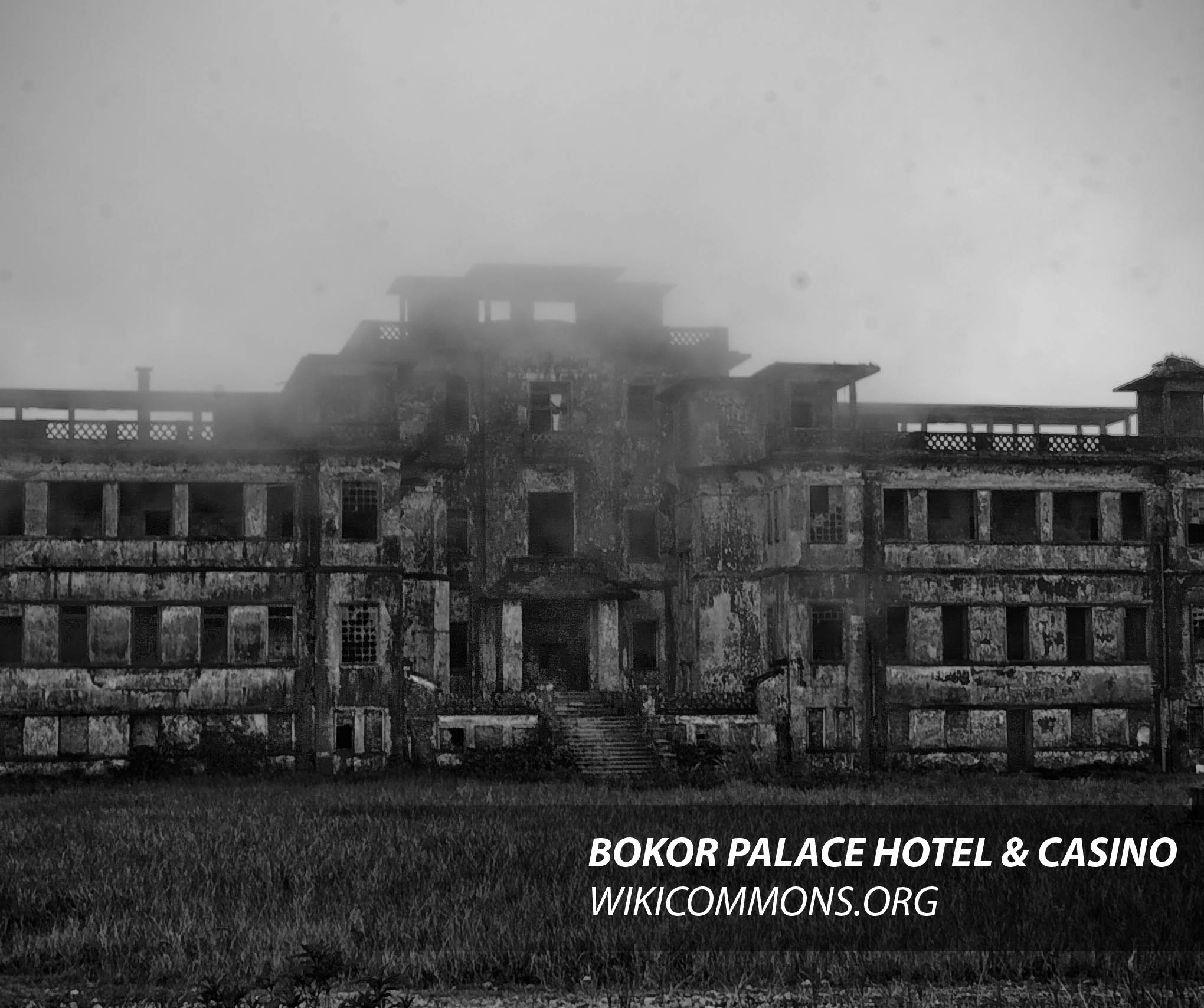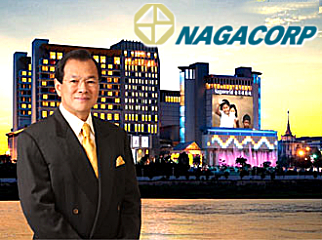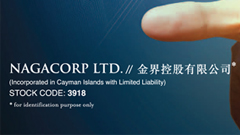 In the gambling industry, for the most part, “Asia” is synonymous with “Macau.” Macau is, of course, the world’s largest gaming market, with annual revenue more than five times that of the Las Vegas Strip. As the only gambling destination in a country with over 1.3 billion people, its allure is understandable; and the billions of dollars in profit that have flowed from the island to shareholders of companies such as Las Vegas Sands (LVS) and Galaxy Entertainment (GXYEY.PK) have only added to its attractiveness.
In the gambling industry, for the most part, “Asia” is synonymous with “Macau.” Macau is, of course, the world’s largest gaming market, with annual revenue more than five times that of the Las Vegas Strip. As the only gambling destination in a country with over 1.3 billion people, its allure is understandable; and the billions of dollars in profit that have flowed from the island to shareholders of companies such as Las Vegas Sands (LVS) and Galaxy Entertainment (GXYEY.PK) have only added to its attractiveness.
The focus on Macau – and its predominantly Chinese gamblers – is understandable. Not only is the Chinese population attractive for its size – substantially larger than that of the US, Canada, and Europe combined – but there are simply very few locations in Asia where land-based gaming is permitted. In fact, the next four most populous countries in Asia – India, Indonesia, Pakistan, and Bangladesh – have a combined population of nearly 2 billion people, and zero casinos.
Even in the region’s smaller markets – such as Thailand, South Korea, and Vietnam – regulation is substantial. In Korea, only one casino – Kangwon Land (035250.KS) – is allowed to accept local customers. In Vietnam, locals are barred from entering the country’s casinos; while in Singapore, substantial daily levies are designed to discourage the city-state’s residents from visiting its two casinos. As such, many casinos in those countries share the same focus on Chinese gamblers as their peers in Macau, while lacking some of the amenities – and certainly the size – of the operators on that island.
Of course, smaller size and smaller revenue also means it’s easier to create growth. Last year, I covered a few of the non-Macau gambling stocks available to investors, including casinos in South Korea and Cambodia. And over the past fifteen months, shares of those companies – including Cambodia’s NagaCorp (3918.HK), and Korean operators Paradise Co Ltd (034230.KS) and Grand Korea Leisure (114090.KS) have largely outperformed their counterparts in Macau. While analysts fret about slowing VIP activity in Macau, and overall growth rates that have decreased from the 40- and 50-percent levels of just a few years ago, the smaller operations elsewhere in Southeast Asia are posting significant top-line and bottom-line improvement.
Surprisingly, Korean gambling stocks have risen of late, despite increasing sabre-rattling by North Korea at its southern neighbor. As Inside Asian Gaming noted in a 2011 piece on gambling in South Korea, the effect of a war on the peninsula could be devastating for the country’s economy and its casinos. “Think ‘Fall of the Berlin Wall’ times one hundred, and with half-starved refugees,” the magazine warned ominously. Yet despite those fears, all three stocks sit at or near 52-week highs. That kind of political risk – in an industry already dominated by regulatory uncertainty – might be too much, especially at elevated levels.
To be sure, any military action on the peninsula would have far-reaching effects across Indochina, and likely all of Southeast Asia. But the effects in a country like Cambodia would be far less severe, and given the growth in the country, far likelier to be overcome. At NagaCorp, for instance, 2012 revenue grew nearly 25 percent year-over-year, with net profit increasing 23 percent over 2011, according to the company’s year-end report. Notably, NagaCorp has been able to do what many Macau operators have yet to accomplish: successfully cater to the more profitable mass market gambler. 66 percent of NagaCorp revenue came from mass market gamblers, who provided a stunning gross margin of 91 percent; VIP margins were a still-healthy but far-lower 37 percent. In a December profile of the company in Inside Asian Gaming, CFO Philip Lee told the magazine that the “ideal mix” for the company would be in that range of 65/35 in favor of mass market; “it gives us the highest margin,” he added. Still, the company is not abandoning the VIP segment; far from it, in fact. The company is opening new VIP suites on its property; after a tour of the facilities, analysts at Union Gaming said the private rooms “notably exceeded our already-high expectations.” They went on to add that the suites “compare very favorably to any other VIP space throughout the region [including] private gaming salons and villas in Macau. These suites are likely drivers of an increased caliber (wealthier) player.” By year’s end, the company will also have its own private terminal at Phnom Penh International Airport to serve its VIP customers.
Those VIP customers are, admittedly, different from those chased by Macau operators. Citi Research referred to NagaCorp’s high rollers as the “Poor Man’s VIP,” while CIMB Bank estimated that 70 percent of the casino’s VIP clients are “low- to middle-end players” from Malaysia, adding that NagaCorp “is not targeting the same types of ultra high-end VIP players that are being targeted in other markets.” Meanwhile, more than one-third of the company’s mass market customers come from Vietnam, often by bus from Ho Chi Minh City.
The reliance on profitable Vietnamese gamblers raises one risk for the stock, one mentioned by nearly every analyst that covers the company: the risk that Vietnam will build its own casinos and allow locals to enter the property. However, so far, this risk has simply not materialized; despite pressure from such notables as Las Vegas Sands CEO Sheldon Adelson, the Vietnamese government has refused any suggestion that locals might be allowed in the country’s casinos. In response, both MGM Resorts International (MGM) and Genting Bhd (GENT.KL) have quit proposed resort-casino developments in the country, while LVS and Adelson have failed to make any substantial progress on their own rumored interest in a Vietnam project.
As such, NagaCorp’s business appears to be relatively protected, with competition for its mass market competitors limited and a profitable VIP niche that will be expanded by the new suites and the Naga 2, to be completed in 2015, which will triple the number of tables at the casino, according to CIMB. The company is finally seeing a relatively stable government; the company has a monopoly on gambling in Phnom Penh (Cambodia’s capital) under 2035 and a sweetheart tax arrangement that expires in 2015. Yet the company trades at just 12x trailing earnings – well below the multiple of Macau operators – and offers a handsome dividend yield over 5 percent at current rates. Though the stock has doubled since I recommended it last April, NagaCorp still has plenty of room to grow its earnings, its dividend, and its share price.
 One of the risks facing NagaCorp is the rise of casinos in Cambodia and competition from those projects. To the company’s dismay, one of those competitors is, as IAG noted in December, currently one of its suppliers. Hong Kong-based and US-listed Entertainment Gaming Asia (EGT). EGT is a highly speculative stock; its total market capitalization is $56 million, and 2012 revenue just $32.8 million. Adding to the risk is the fact that over $14 million of that revenue – 43% of the company’s total sales – came from slot machines on the NagaWorld floor, in which EGT and NagaCorp operate a revenue-sharing agreement, according to EGT’s most recent annual report.
One of the risks facing NagaCorp is the rise of casinos in Cambodia and competition from those projects. To the company’s dismay, one of those competitors is, as IAG noted in December, currently one of its suppliers. Hong Kong-based and US-listed Entertainment Gaming Asia (EGT). EGT is a highly speculative stock; its total market capitalization is $56 million, and 2012 revenue just $32.8 million. Adding to the risk is the fact that over $14 million of that revenue – 43% of the company’s total sales – came from slot machines on the NagaWorld floor, in which EGT and NagaCorp operate a revenue-sharing agreement, according to EGT’s most recent annual report.
IAG pointed out that EGT’s entry into the operation of casino “irks [NagaCorp] management,” adding that “Naga executives expressed displeasure, but did not venture to say exactly how they would respond in 2015.” (According to the article, EGT’s agreement to provide slots to NagaWorld expires in 2015; according to EGT’s 10-K, the concession expires in March 2016.)
A decision by NagaCorp to end its business with EGT – which opened its second casino last week, with a third planned to open later this year – is a material risk to EGT stock. But it may be a risk worth taking. According to CIMB, NagaWorld will have 1,500 electronic machines by year’s end; 670, or nearly half the total, are supplied by EGT. The sheer size of EGT’s presence may lead NagaCorp to continue its partnership, although it may certainly use its leverage to negotiate a better revenue-sharing deal. Furthermore, EGT’s casinos are far smaller than NagaWorld, which plans to become an integrated resort once Naga 2 is completed in 2015. NagaWorld has 138 tables and nearly 1,500 machines; EGT’s first resort in Pailin has just 30 tables and only 52 machines. Both the Pailin and the Poipet properties are targeting the Thailand market, rather than NagaCorp’s key Vietnamese customer base. (The third location, in Kampot, will be much closer to the Vietnam border.)
It may be that NagaCorp decides it can handle EGT’s competition. Even if it doesn’t however, EGT represents an admittedly high-risk – but potentially high-reward – play on growth in Southeast Asia. The company is already profitable and cash-rich; beyond distributing slot machines and operating the three properties, the company designs and manufacturers chips and plaques for casino customers. Revenue grew 21 percent year-over-year in 2012, due not to the NagaWorld operations but success in the manufacturing segment and revenue-sharing agreements with another casino in Cambodia and three in the Philippines. Over the last four years, the company has more than doubled revenues, while the company has swung from a net loss of $26 million in 2009 to $1.8 million in net income in 2012.
And yet the company still looks relatively cheap, trading at less than six times its pre-tax profit from 2012. The stock saw particular weakness on Friday, as first quarter earnings appeared to disappoint investors. But much of that weakness came from NagaWorld, whose operations were impacted by a mandatory mourning period for former king Norodom Sihanouk. EGT’s risks extend well beyond its ruffling of NagaWorld’s feathers; the same political and economic risks faced by smaller operators – including NagaWorld – will no doubt affect EGT.
But, at the same time, it’s simply difficult to find growth in the gambling industry anywhere; and EGT’s smaller structure may allow it to create substantial bottom-line growth going forward, with or without NagaCorp. It’s no doubt a high-risk venture; the company’s lease allow for various revenue-sharing agreements with its landlords, which could exacerbate the company’s problems if the ventures don’t pan out. But there is a great deal of opportunity in Southeast Asia – well beyond Macau – and EGT could turn out to be a home run, if the company can expand its operations and continue its recent run of growth.
